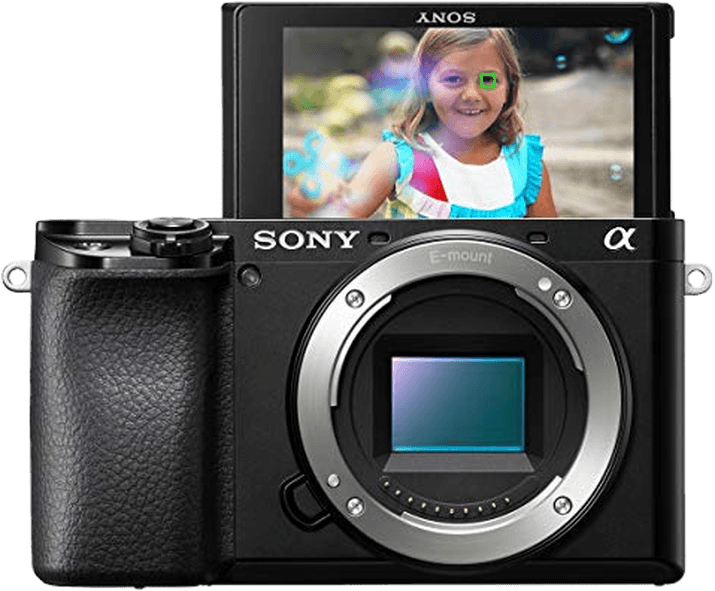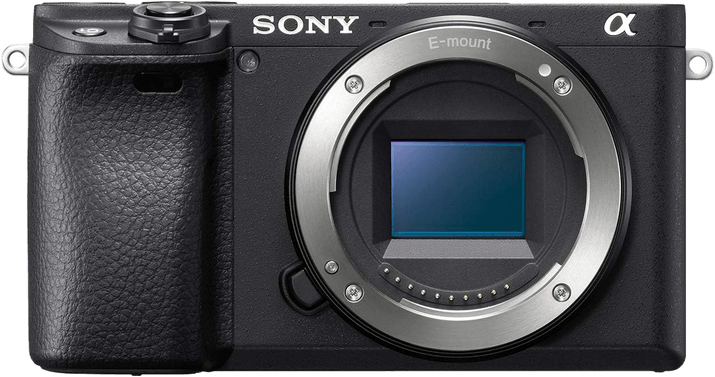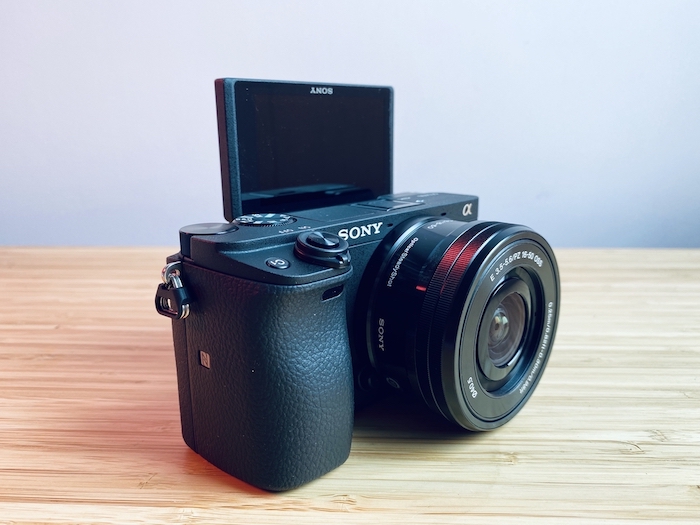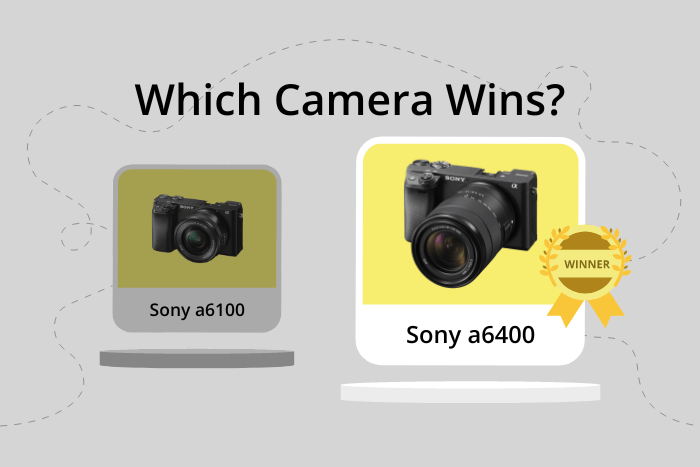Sony a6100 vs a6400 Comparison
Sony a6100

Sony a6400

Sony a6100 vs a6400 Overview
This is our detailed comparison of the Sony a6100 vs a6400. We have done our research. And we show the differences and similarities between these two rangefinder-style mirrorless cameras.
They both sit in Sony’s a6x00 range. But the Sony a6100 is intended as an entry-level model. And the Sony a6400 is more of a mid-range product.
Do you want the highest specs in the series, including in-body stabilization? Then you should get the a6600. The three cameras are updated evolutions of the a6000, a6300, and a6500. If you are choosing between the Sony a6400 vs a6100, then read on.
Body and Handling
The two cameras look pretty much identical. The most significant difference in the camera body is weather sealing. The Sony a6400 has a magnesium alloy body with weather sealing. But the polycarbonate Sony a6100 doesn’t have it.
The Sony a6400 is less than an ounce (7 g) heavier, though. So it doesn’t affect the handling. The only other change? The a6400 has a switch to turn the exposure lock button into an autofocus and manual focus (AF/MF) button.
In terms of handling, the 3-inch touch screens are identical. And they tilt up by 180 degrees to make it easy to frame selfies and record vlogs.
But the Sony a6100’s OLED electronic viewfinder has a disappointingly low resolution. That might be a dealbreaker if you try it out and don’t like it. You get 63% more “dots” with the a6400. This makes it a much better viewing experience.

Sony a6100 vs a6400 Optics
Let us delve into the Sony Alpha a6100 vs a6400 optics specs. The two cameras have the same 24.2 MP Exmor CMOS APS-C sensor with an anti-aliasing filter. That means the image quality should be identical. They provide the same lifelike skin tones and low-light performance.
There’s also an LSI (large-scale integrated) circuit. This increases the power of the BIONZ X image processor. And they help reduce noise at high ISOs for both stills and video.
Both cameras have the same normal ISO range. But the Sony a6400 has an expanded range that goes one stop higher.

Sony a6400
Both cameras have hybrid autofocus. You get all the accuracy of a contrast detection autofocus system. And you have all the speed of a phase detection autofocus system:
- 425 contrast detection and 425 phase detection focus points
- Great minimum sensitivity of -2 EV at f/2 in AF-S (single autofocus) for low light
- A very fast focus acquisition time of just 0.02 s
Sony’s tracking and eye detection are the best on the market. These cameras offer Real-time Tracking AF for stills and video. And Real-time Eye AF for people and animals. You can also use the rear screen for Touch Tracking.
The continuous shooting speed is also the same. Both cameras can shoot at 11 fps (or 8 fps with silent shutter). But the Sony a6400 has a larger buffer. It can take 99 Extra Fine JPEGs or 46 RAW images in continuous shooting mode. The Sony a6100 can only manage 76 or 33, respectively.
Finally, the Sony E-mount is the same. So you have the same range of lenses to choose from. But it is hard to find a good, general-purpose zoom for an APS-C camera in the Sony lineup of lenses.
Sony a6100 vs a6400 Video Performance
Both cameras offer unlimited video recording. They have 100 Mbps output and a wide range of MPEG-4, XAVC S, and H.264 video formats. These include 4K 24p and 30p and Full HD video up to 120 fps for slow motion clips.
You can slow the video down 5x. And quick motion is available up to 60x. With 4K movie recording, you get full pixel readout and no pixel binning. It also allows oversampling by around 2.4x. This is the equivalent of 6K.
But the a6400 also features S-Log2, S-Log3, and Hybrid Log Gamma (HLG, i.e., HDR) picture profiles. They capture up to 14 stops of dynamic range. And they allow color grading and a better workflow in post-processing.
S-Log video may look “washed out” on the LCD. But that’s just because Rec. 709 screens have a much smaller color “gamut” (or range).
If you switch on Gamma Display Assist, the a6400 will use Look Up Tables (LUTs). This will make the muted colors much richer. And it lets you check focus and exposure more easily.
Both cameras work with iMovie and Final Cut Pro X.
Sony a6100 vs a6400 Features and Benefits
Now we’ll compare the main features of the Sony a6100 vs a6400.
They’re both made by Sony and sit in the same range. They differ in weather sealing and EVF resolution. And the a6400 has a Shutter AWB (auto white balance) lock. Otherwise, they have the same handy features:
- 8 customizable buttons
- A built-in flash
- Colored focus peaking
- An external microphone port
- A focus magnifier
- Image rating
- Wireless, NFC, and Bluetooth connectivity
The Creative Style feature lets you choose profiles on both cameras. Options include Vivid and Portrait. They adjust the look of your images.
They also have Picture Effect options. These include Partial Color and Miniature for more imaginative approaches.
They also have 16-bit RAW processing (for 14-bit RAW images). And there’s a time-lapse recording (at intervals of 1 to 60 seconds) and AE (auto exposure) bracketing.
You also get a square aspect ratio. And there’s webcam functionality, one-touch image sharing, and remote control. But neither camera has IBIS (in-body image stabilization) to reduce camera shake.
You can also download Sony’s Imaging Edge mobile app. This has other features, including geo-tagging.
Sony a6100 vs a6400 Storage and Battery
Both the Sony a6100 and Sony a6400 have a single memory card slot. They accept SD UHS-I, microSD, or Memory Stick PRO Duo memory cards. But you can’t use the faster XQD or CFexpress Type A and Type B cards.
The official CIPA figures show both have the same battery life when shooting video. But when using the electronic viewfinder, the Sony a6100 takes 20 more shots per charge. And using the LCD monitor, it takes 10 more shots.
But these figures should only be used as a rough guide. I have a pair of Sony a1 mirrorless cameras. They’re only supposed to give me 430 shots through the viewfinder. But I’ve filled up a whole memory card with only one battery—that’s 2,561 shots!
The reason? Mirrorless cameras get a lot more shots from a single charge in continuous shooting mode. And I’m sure that’s the case with these two Sony cameras.
Sony a6100 vs a6400 – Our Verdict
A comparison of the Sony a6100 vs a6400 shows the Sony a6400 is better in almost all respects. And it only costs a few dollars more. That makes it by far the better buy unless you want to invest in the much more expensive a6600.

Sony a6400
What Camera is Better Than the Sony a6400?
The Sony a6600 is at the top end of the a6x00 series. It’s almost double the price of the Sony a6100 or a6400.
But it has in-body stabilization, a headphone port, and slightly better viewfinder magnification. You also get much better high-ISO performance and almost double the battery life.
But there’s no built-in flash. It’s also a thicker 0.4 inches (9 mm) and 3.5 oz (100 g) heavier. And it doesn’t offer the same good color depth or dynamic range.
Still not sure which camera is for you? Why not check out these popular camera comparisons next:

